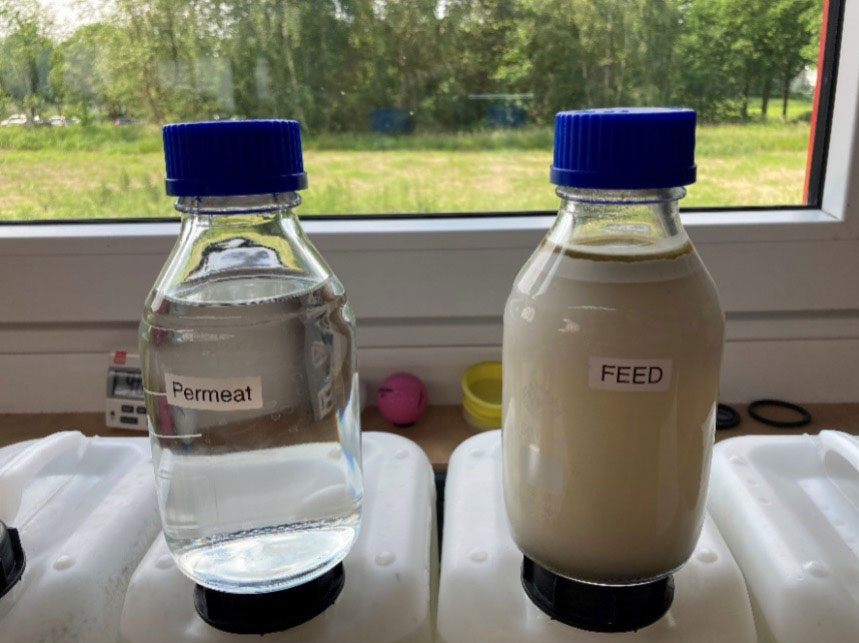Treatment of emulsions (cooling lubricants) and wash waters from mechanical production
Filtration of used emulsions and wash waters with ceramic membranes: reduction of wastewater volume, cost reduction, generation of filtrate suitable for discharge into the sewer or wastewater treatment plant, compliance with discharge requirements.
Key technology for the treatment of emulsions
In the production of components for vehicles, used emulsions and oily washing water are produced during mechanical processing and subsequent cleaning. Due to the high loads and discharge requirements, this wastewater cannot be discharged directly into the sewer system or even directly into the company's own wastewater treatment plant. Ceramic membranes are used for on-site pretreatment/treatment of the wastewater produced and significantly reduce the pollutant load. In principle, the aim is to achieve a significant reduction in oil content and thus a reduction in the COD / BOD load.
atech membranes meet the high requirements
Due to the short service life and high susceptibility to failure of the existing filtration modules of a competitor, these were replaced with modules with ceramic membranes from atech at a well-known automobile manufacturer.
With a total filter area of 200 m², the oily wash waters and emulsions are now reliably treated with ceramic membranes made by atech.
The emulsions, which are produced daily in the production of vehicle parts, are pre-treated via a free oil separator and a belt filter and finally tempered to approx. 70° C in the working tank. This pre-treated wastewater is now fed into the ultrafiltration plant with atech membranes. The plant removes undissolved COD, TSS (Total Suspended Solids), agglomerates, precipitated metals and emulsified oils. The permeate - i.e. the filtered liquid - from the ultrafiltration plant is fed to the companies own wastewater treatment plant, where it is biologically treated.
The UF concentrate, which contains the impurities, is disposed of externally. The UF achieves a yield of > 90 %, has been running trouble-free since November 2005 and has reached the planned capacity. Basically, a reduction of the oil content and thus a reduction of the COD / BOD load is aimed at in order to improve the subsequent, biological treatment.
Membranes suitable for filtration of used emulsions and oily wash waters
| Channel- diameter | Pore-size (µm) | Permeate- performance (l/m²h) | Temperature (°C) | TMP (bar) | Velocity in channel |
| 3.3 - 3.8 | UF | approx. 50-120 (depending on pollution level) | approx. 80-120 °C approx. 86-176 °F | approx. 1,5-3 bar approx. 21,7 -43,5 PSI | 4-6 m/s 13-19 ft/s |

